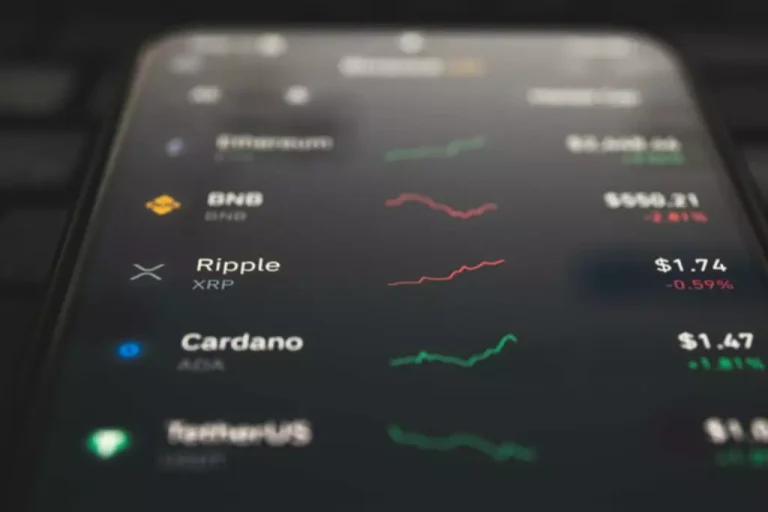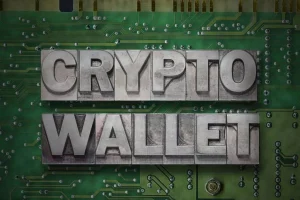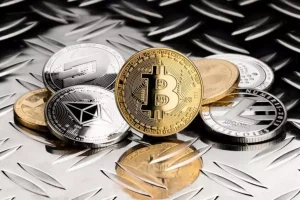Before the advent of decentralized finance platforms, users could access liquidity by exchanging one asset for another. But DEX exchanges have introduced a new way for crypto holders to generate income by adding their cryptocurrencies to the general pool.
An essential factor in this regard is the emergence of new trading venues. So far, trading in cryptocurrencies has only taken place on a centralized exchange (CEX). However, smart contracts might also create decentralized exchanges (DEX), which function automatically and autonomously.
Digitization affects the financial sector in many aspects. New investment products, organized in a decentralized manner, are increasingly emerging. By fully automating such protocols, they are often designed more cheaply and securely than conventional applications. This article will explain what liquidity mining is, how it works, and how it allows users to earn.
What is liquidity mining?
Liquidity mining is a way of managing the market. The exchange and issuer of tokens reward the community for providing it with liquidity to the trading pairs in which these tokens participate. Miners earn income from a share of the fees that traders or investors of the decentralized platform pay for the exchange, the price spread, and the lifetime of your orders.
At the same time, the platform doesn’t need to provide only trading in cryptocurrencies. It can be investments in crypto start-ups or lending. But most often, this method is widespread among automated market makers (AMM). All participants store tokens into a shared pool called the liquidity pool. As with staking, liquidity mining can theoretically also be carried out independently. Although this saves fees that would otherwise go to a corresponding platform, it is technically very complex. Liquidity mining platforms simplify this process so that it actually boils down to a few clicks for the end-user. Anyone has a chance to participate in most protocols such as DefiChain, Yearn Finance, or Uniswap through liquidity mining and receive rewards in the form of native tokens or so-called governance tokens.


Turnkey Brokerage Solution For Your Business
Get the most profitable fully licensed fx/crypto brokerage software or ready-to-operate business in 48 hours. Best-in-class web & mobile trading platforms, sales-driven CRM, full integration with MT4/5, and 150+ payment providers.
Liquidity Pools Definition
A liquidity pool is a platform where token holders lend their tokens, so decentralized exchanges always have a supply of tokens. In return, token holders receive a proportional percentage of commissions from all transactions made. Token holders help stock exchanges get liquidity and thus earn money or tokens. Liquidity pools are revolutionary as they eliminate the need for a centralized order book.
The liquidity pool mainly consists of two tokens. Each liquidity pool might be considered a separate market to that particular token pair. When a liquidity provider adds liquidity to a pool, it receives LP tokens corresponding to the liquidity it provides. For each completed transaction, the commission is distributed among all holders of LP tokens. Consequently, liquidity pools allow you to earn passive income from your investments. Depending on the token, this can be a significant amount. The more extensive the pool, the easier it is to trade AMM. Accordingly, protocols can incentivize token holders to join the liquidity pool by rewarding them with additional tokens. It is known as liquidity mining.
What is Decentralized Finance (DeFi)?
Decentralized finance (DeFi) is a blockchain-based financial system that offers the same features and services as traditional finance but in a decentralized way. All stakeholders can reap the benefits of cryptocurrencies while gaining access to many well-known financial products such as loans or insurance products.
The most crucial difference to the traditional financial system is that well-known financial products are no longer offered exclusively by banks. Instead, standard tasks and functions of the banking and exchange sector might be taken over by market players in the DeFi space. Or, in simpler terms: the intermediary is switched off.
How Does Liquidity Mining Work?
To enable trading on decentralized platforms, they must provide liquidity. Users deposit their capital on the platform, and in return, they receive a share of the fees. As a rule, only trading pairs might be stored here, which means that two different cryptocurrencies always flow into the pool.
Each trading pair is thus defined in its smart contract or pool. Users send the respective token A to the address of trading and receive the desired token B at the fixed exchange rate. There is a small fee to this process.
This fee also acts as an incentive for depositing capital. Liquidity providers obtain a percentage of the trading fees. Thus, they earn passive income through liquidity mining.
In addition, numerous platforms provide further incentives in the form of tokens. The lenders thus receive additional cryptocurrencies for using the service, which is freely traded on the market. These often offer several advantages, such as voting rights in further development. Additional profits may be generated through possible price increases of the tokens.
Benefits of Liquidity Mining
Now that you comprehend liquidity mining, it’s time to understand the benefits of using this investment strategy. You can be sure of the return your investment will bring when you provide assets to liquidity pools. The main benefits associated with DeFi liquidity mining are:
- High profits potential.
- Control distribution and native tokens.
- Low entry threshold.
- Reliable and close-knit community.
Before you dive into liquidity mining, it is essential to understand that your returns are proportional to the actual risk you take on. Thus, this strategy will be beneficial to any investor. If you want to make a significant investment, your reward will be proportional to your contribution. The same will work if you try liquidity mining before committing to it full-time.
Features of the Phenomenon
The lack of liquidity is reflected in higher trade execution costs. Liquidity measures the difference between the realized price when buying or selling and the expected price of an asset. This difference is called slippage. Liquidity is the ability to buy and sell assets without a significant change in market value.
It is necessary to issue new tokens and cryptocurrency trading in general. The following criteria are decisive here:
- Transaction speed: the faster a transaction is made, the higher the market liquidity.
- Trading price: the lower the slippage when trading on the exchange, the higher the liquidity.
- Depth of Transactions in Order Books: Depth of transactions may measure the degree of market price stability. The greater the depth, the less the impact of commerce on the transaction price.
There are currently many DeFi projects that are participating in liquidity mining programs. Many have started paying out native tokens as a reward for using their services.

Who Benefits From Liquidity Mining?
Liquidity mining is a win-win situation for the projects and their participants. The big beneficiaries are decentralized exchanges (DEX) and lending platforms, which are experiencing even greater demand. But are there other winners?
The increased demand of liquidity mining in DeFi applications will inevitably lead to increasing demand of smart contracts. As a result, the need for smart contract insurance such as Nexus Mutual or Opyn is also likely to increase. The massive growth of DeFi applications and governance tokens will increase the demand for clear data aggregators and dashboards.
Finally, the Ethereum miners will probably also benefit from the increased use of liquidity mining. Without capacity expansion, more transactions will eventually increase fees.
How to Dive Into Liquidity Mining?
To work with liquidity mining, the miner does not need special equipment —it is enough to choose a project that will generate income and choose a strategy for work. The following steps will guide you through the liquidity generation process.
Step One: Choose a Platform
First, you need to choose a platform on which you want to mine liquidity. It can be an exchange, a wallet provider, or another medium. Binance is an illustration of an exchange which offers rewards to users who deposit their tokens on the exchange. These tokens are then used to provide liquidity to other traders.
Step two: Select a Token
Once you have selected a platform, you must also choose which token to mine in order to get a liquidity. Different platforms offer different rewards for other cryptocurrencies and stable coins.
Step Three: Provide Liquidity
The third step is the provision of liquidity. The tokens you select are transferred to a pool on the platform where other traders can use them. The level of security such pools offer varies from provider to provider and should therefore be checked carefully before each transaction. Choosing Binance gives you a significant advantage: you don’t need to bother with the external creation of the trading pair token.
Fourth step: Get Rewards
Once you provide liquidity, your reward will likely be sent to an address of your choice within a few hours or days (hanging on the platform). In addition, you should note there are different types of rewards. Some are paid in proportion to the amount you pledge, while others use a fixed reward plan or payout according to the market value of your tokens.
Step Five: Withdraw your Rewards
Once you have received your rewards, you can withdraw them. The procedure of withdrawing rewards varies from platform to platform. If you use an exchange, the best way to withdraw your tokens is from their platform.
Liquidity mining is a way to earn rewards by providing liquidity to other traders. The opportunities offered by liquidity mining are numerous and can be very lucrative, but some risks should be considered.
Liquidity mining is a relatively new concept, so it is still unclear how it will develop in the long term. Nonetheless, it’s a great way to earn rewards and should be considered by anyone seeking additional sources of income.
Mining Liquidity Risks
Decentralized exchanges are a very recent phenomenon and are therefore still under development. Consequently, it cannot be ruled out many platforms may have security gaps. In the worst case, attackers could use this to hack pools and program them for their benefit. There are many other risks:
- Irregular loss. A possible intermittent loss is one of the main risks beginners face when first entering the liquidity pool. The tokens you have locked in the pool may lose value until you can move them. When you are willing to transfer the funds, these losses may or may not be permanent.
- Project authority. Another risk users are exposed to is running into DeFi projects that present many challenges (governance, scalability, etc.) and are doomed to failure. Or they were created from the beginning to steal investors’ money.
- NFT scam. Do your research before investing. The authors of many projects that eventually become legitimate are anonymous, so you should pay attention to other signs. From them, study the white paper, roadmap, tokenomics, smart contract audit, and what experts and the community have to say about it.
- Code vulnerability. Since DeFi is a new technology, it is common to find protocols that have not been developed efficiently. In the case of liquidity mining platforms, smart contracts can have weaknesses that hackers can exploit.
Even if you can’t (or don’t know how) read line by line the code that these exchanges were programmed with, never trust projects that don’t have incentive programs to detect bugs and are not transparent to the community about their code. Therefore, publishing public audits is essential.
What Else Should I Know?
Liquidity mining can bring you very high profits. You quickly earn significant passive income with a high annual interest rate and regular giveaways. Due to the complexity and routine maintenance, liquidity mining is only recommended for advanced or well-informed crypto investors.
Almost every day, new projects appear touting highly high-interest rates. Since, in principle, anyone can create their cryptocurrency, there are many blank spots among the projects. It is not uncommon to newbies or the uninformed to invest in scammers and permanently lose their assets. There is also the risk of irretrievable loss.
Liquidity Mining and Staking
A popular passive income strategy to consider, along with liquidity mining, is staking. A consensus algorithm allows you to transfer your crypto assets as collateral as part of proof-of-stake (PoS) algorithms. In contrast to staking, there is an impermanent loss risk (temporary loss) in liquidity mining. However, total loss is theoretically possible if the token falls in value and no longer reaches its original price.
Miners use a certain amount of computing power to maintain consensus on a proof-of-work (PoW) blockchain. Investors who stake the most will be selected to validate blockchain transactions. In addition to improved energy efficiency compared to PoW blockchains, PoS algorithms provide unique reward opportunities. People who wager higher amounts tend to earn higher rewards, which is similar to mining the liquidity of cryptocurrencies.
Well-known Liquidity Mining Providers
The number of liquidity mining providers is increasing and creating new opportunities among investors. However, users should always consider all the risks before choosing a suitable platform. Even if many of the projects are already considered established, individual security gaps cannot usually be ruled out:
- Uniswap. The currently most well-known provider for decentralized trading and liquidity mining is Uniswap. The application allows you to connect directly to your wallet. Token swaps then take place now between the wallet and the respective pool.
- Bankor. Bancor is a blockchain protocol that enables the direct exchange of cryptocurrencies. The Bancor Network Token (BNT) is used, allowing transactions and liquidity mining. Along with Uniswap, Bancor is one of the largest providers of decentralized exchanges.
- Balancer. With Balancer, investors also can participate in decentralized trading in cryptocurrencies. The protocol was launched by Balancer Labs in 2019 and has already raised $3 million in seed funding.
The applications themselves cannot guarantee complete security either. Most projects are in a beta version, and use is entirely at your own risk. When choosing a DEX, extensive research should precede it, and small test transactions should check the function. Even if the access data to your wallet is lost, the user is solely liable and cannot make any claims against an exchange.
Should I Try Liquidity Mining?
Even though you now have a clear understanding of liquidity mining, this strategy is not for everyone. Depending on your current investment strategy, it may not be worth the time for you personally. To determine if cryptocurrency mining is suitable, weigh the pros and cons.
The main advantage of investing in liquidity mining is that your return is proportional to the risk you take. It allows you to measure the trouble with your investments the way you want. This particular investment strategy is also easy to learn, making it ideal for beginners. On the other hand, there are a few risks to be aware of.
Summing Up
Liquidity mining allows you to earn cryptocurrencies passively and receive more income than interest on deposits and even PoS staking. However, this method has risks that are not found in other types of mining, so you should be careful to provide your tokens to the liquidity pool, especially if the project promises high returns. Always check the platforms carefully and read the agreement to avoid unpleasant surprises.






